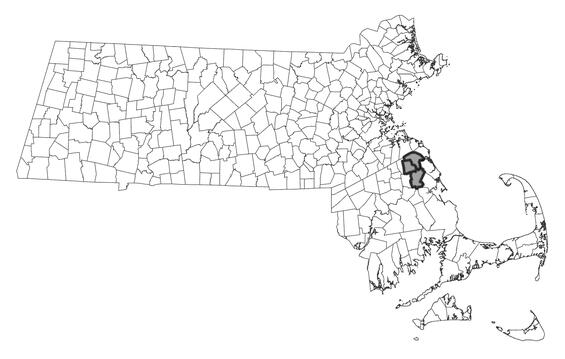- Scientific name: Bidens hyperborea Greene
- Species of Greatest Conservation Need (MA State Wildlife Action Plan)
- Endangered (MA Endangered Species Act)
Description
Estuary beggar-ticks. Photo credit: Sean Blaney/AC CDC
Estuary beggar-ticks is an annual plant in the composite family reaching a height of half a meter (1.6 ft). The one to a few flowering heads are found in the leaf axils, terminating the plant. The flower heads may be composed of a central yellowish button of disk flowers or may also have short yellow rays (petal-like flowers) surrounding the disk. The leaves are smooth, opposite, and stalkless. The one-seeded dried fruit, known as an achene, is rough-hairy and has three barbed teeth. These barbed fruits become easily attached to the clothing of passers-by, hence the common name.
Eaton’s beggar-ticks (Bidens eatonii) occurs in practically the same habitat, although the two species have not been found together in Massachusetts. It differs from estuary beggar-ticks in having obviously stalked leaves and practically hairless achenes. Another species, swamp beggar-ticks (Bidens connata) may grow in the upper tidal zone but is taller, with broader leaves and achenes with wart-like bumps.
Life cycle and behavior
Estuary beggar-ticks usually flowers from August through September.
Population status
Estuary beggar-ticks is listed under the Massachusetts Endangered Species Act as Endangered. All listed species are protected from killing, collecting, possessing, or sale and from activities that would destroy habitat and thus directly or indirectly cause mortality or disrupt critical behaviors.
Distribution and abundance
Estuary beggar-ticks ranges from the Gaspe Peninsula, Quebec, and Nova Scotia, to Massachusetts and the Hudson River in New York. It is also found in the James Bay region. Currently, only two occurrences are documented in Massachusetts; historically, it was also known from the Merrimack River.This species is rare in the state because it is near the southern limit of its range and because its natural habitat has been diminished by damming rivers: fewer than five good occurrences of freshwater tidal marsh remain in Massachusetts.

Distribution in Massachusetts
1999-2024
Based on records in the Natural Heritage Database
Habitat
Estuary beggar-ticks are found in freshwater tidal marshes.
Healthy habitats are vital for supporting native wildlife and plants. Explore habitats and learn about conservation and restoration in Massachusetts.
Threats
Threats include damming and subsequent flooding or drawdown, filling of marshes, and siltation.
Contact
| Date published: | April 7, 2025 |
|---|